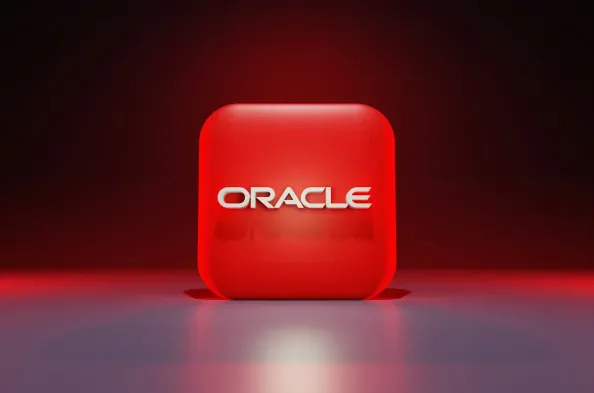In a developing scenario that has captured the attention of the technology sector, a potential data breach at Oracle Cloud Services has sparked widespread debate. Recently, a hacker using the alias “rose87168” announced the acquisition of six million records, including sensitive data such as encrypted SSO passwords, Java KeyStore files, and LDAP credentials. Oracle representatives have categorically denied these claims, asserting there was no breach or customer data compromise. However, cybersecurity firm CloudSEK has provided contradictory evidence, suggesting the breach might be real.
Examination of the Alleged Data Breach
Claims by the Hacker “rose87168”
The hacker who identifies as “rose87168” claimed to have exploited a vulnerability in the Oracle Fusion Middleware 11G (CVE-2021-35587). This assertion was supported by the presentation of evidence including snapshots from the Internet Archive’s Wayback Machine and scripts hosted on GitHub. The hacker demonstrated their access by uploading a text file to login.us2.oraclecloud.com, suggesting a comprehensive infiltration. Furthermore, the hacker is said to have compromised data from over 140,000 companies, including high-profile Australian firms like Telstra, Optus, NBN Co, and Deloitte. It has been reported that some companies have even paid the hacker to remove their data in an attempt to safeguard their systems.
While Oracle has firmly denied any breach, stating that there has been no customer data loss, the presence of conflicting viewpoints has created an atmosphere of uncertainty and confusion within the cybersecurity community. CloudSEK’s detailed analysis suggests that the reported data breach occurred through an unpatched vulnerability in Oracle’s systems. By exploiting the CVE-2021-35587 flaw, the hacker gained unauthorized access, casting doubts on Oracle’s assurance of system security and integrity.
CloudSEK’s Contradictory Evidence
Cybersecurity firm CloudSEK has reviewed the situation extensively and rebutted Oracle’s denial of the breach. The analysis included verifiable proof that the data breach stemmed from exploiting the vulnerability CVE-2021-35587 in Oracle Fusion Middleware 11G. This extensive investigation demonstrated access to powerful systems, supported by technical evidence. CloudSEK found evidence of breaches at several prominent organizations, suggesting a wider effect than initially thought.
Significantly, CloudSEK highlighted the need for affected organizations to take immediate corrective actions. Among these are resetting passwords, rotating credentials, and implementing multi-factor authentication to enhance security measures and prevent further breaches. This conflicting narrative stresses the importance of independent security audits and vigilance. Oracle’s steadfast position contradicts the evidence provided by independent analysts, creating a complex scenario for those tasked with cybersecurity within these organizations.
Implications and Recommendations
Actionable Steps for Affected Entities
In light of the conflicting positions on the potential data breach, affected organizations are urged to prioritize security measures despite Oracle’s denial. It is prudent for these companies to reset local and administrative passwords, rotate critical credentials regularly, and enable multi-factor authentication. These steps are essential to mitigate potential damage and future threats. Paying heed to cybersecurity experts, rather than depending solely on Oracle’s assurances, could be the key to avoiding compromise.
The hacker “rose87168” initially demanded a staggering ransom of 200 million Monero, an amount later readjusted with offers to sell or trade the stolen data for zero-day exploits. Since some entities reportedly paid the hacker to remove their data, the community is urged to communicate openly about preventive measures and incidents to create a fortified defense strategy. Raising awareness and fostering transparency about potential security risks is more important than ever in this digital era.
Future Vigilance in Cybersecurity
The clash between Oracle’s official narrative and the findings from independent cybersecurity firms like CloudSEK underscores a significant tension within the tech industry. Even though Oracle maintains its position of no data being compromised, cybersecurity experts suggest that caution is still required. This discrepancy highlights a broader context where organizations must remain continually vigilant and proactive in cybersecurity. Independent security audits, persistent monitoring, and rapid response protocols are crucial in an era where vulnerabilities are exploited swiftly.
Reliable insights from cybersecurity professionals and analytical firms should supplement organizational security strategies. This skepticism towards singular claims, like Oracle’s, ensures that organizations do not overlook potential threats. Despite Oracle’s confidence, the evidence presented by analysts paints a cautionary tale about the constant threat landscape faced in modern data management ecosystems.
Moving Forward with Caution
In a situation that has captured the technology sector’s attention, a reported data breach at Oracle Cloud Services has spurred widespread debate. A hacker using the alias “rose87168” recently announced the acquisition of six million records, which allegedly include sensitive data such as encrypted SSO passwords, Java KeyStore files, and LDAP credentials. In response, Oracle representatives have firmly denied these allegations, asserting that no breach or customer data compromise has occurred. However, cybersecurity firm CloudSEK provided evidence that appears to contradict Oracle’s claims, suggesting that the breach might indeed be real. The developments have sent ripples through the tech community, raising questions about data security protocols and the potential impact on Oracle’s reputation. As the investigation continues, users and experts alike await further information to understand the true extent and implications of the potential breach.






